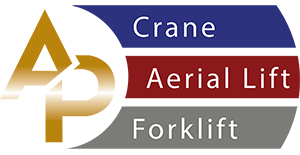
Forklifts play a crucial role in a wide range of industries, from manufacturing to logistics. They are powerful machines designed to lift and transport heavy loads with ease. However, operating a forklift requires proper training, attention to detail, and a deep understanding of safety protocols.
The Key Facts about Operating a Forklift
When it comes to operating a forklift, knowledge is your greatest asset. Understanding the intricacies of the machinery and the best practices for safe operation can prevent accidents and ensure a productive work environment.
Forklift Basics:Getting to Know the Machine
Before you even step foot on a forklift, it's important to familiarize yourself with its components. From the mast and lift cylinders to the forks and counterweight, each part serves a specific purpose. Regular maintenance and inspections are crucial to keeping the forklift in optimal working condition.
Safety First: Preparing for Operation
Safety should always be your top priority. Before operating a forklift, conduct a thorough pre-operation check. This includes examining the brakes, tires, steering, and controls. Check for any leaks or malfunctions that could compromise safety.
Proper Loading and Unloading
Efficiently loading and unloading materials is a fundamental skill. Always ensure that the load is stable and properly balanced. Avoid overloading the forklift, as this can affect its stability and maneuverability. Additionally, be mindful of the load's height and any potential obstacles.
Essential Tips for Operating a Forklift Safely
When you find yourself behind the wheel of a forklift, keep these tips in mind to ensure a smooth and secure operation:
Stay Alert: Maintain focus and be aware of your surroundings at all times. Avoid distractions and keep an eye out for pedestrians and other vehicles.
Use Seatbelts: Just like in a car, wearing a seatbelt in a forklift can prevent serious injuries in case of a sudden stop or collision.
Slow and Steady: Operate the forklift at a controlled speed, especially when turning or navigating tight spaces. Sudden movements can lead to accidents.
Proper Lifting: When lifting a load, ensure that the forks are positioned correctly. Tilt the mast slightly back to stabilize the load before lifting.
Navigating a forklift in a busy warehouse or construction site requires skill and precision.
Clear Visibility: Adjust mirrors and ensure that you have a clear line of sight. Use spotters if necessary, especially when reversing or carrying large loads.
Turning Techniques: When turning, follow wide arcs to prevent the rear of the forklift from swinging out unexpectedly. This can help you avoid collisions with nearby objects.
Our forklift certification renewal training program provides a smooth solution to refresh your operators' skills and knowledge, ensuring that your workplace remains compliant, efficient, and secure.
Overcoming Common Challenges in Forklift Operation
Operating on Uneven Surfaces
Navigating rough or uneven terrain requires extra caution. Slow down and approach these areas at an angle to minimize the risk of tipping over. Keep the load as low as possible to maintain stability.
Working in Tight Spaces
Tight spaces demand precise control. Use the three-point turn technique to navigate confined areas. This involves reversing the forklift in an "S" pattern to create enough space for a turn.
Operating a forklift requires a combination of knowledge, skill, and adherence to safety guidelines. By understanding the key facts, implementing essential tips, and overcoming common challenges, you can ensure a safe and efficient forklift operation. Remember to prioritize safety, stay alert, and never underestimate the importance of proper training.
Forklift certification for individuals and companies. Get a forklift cert today.
